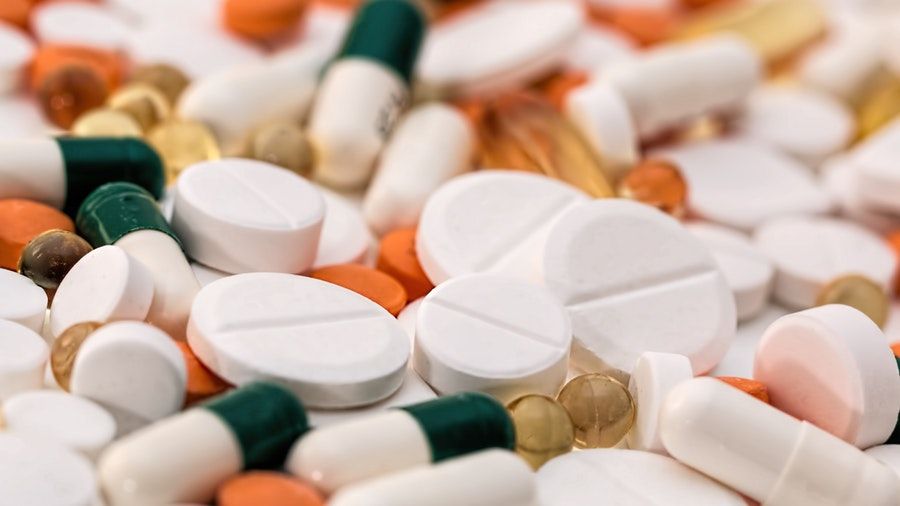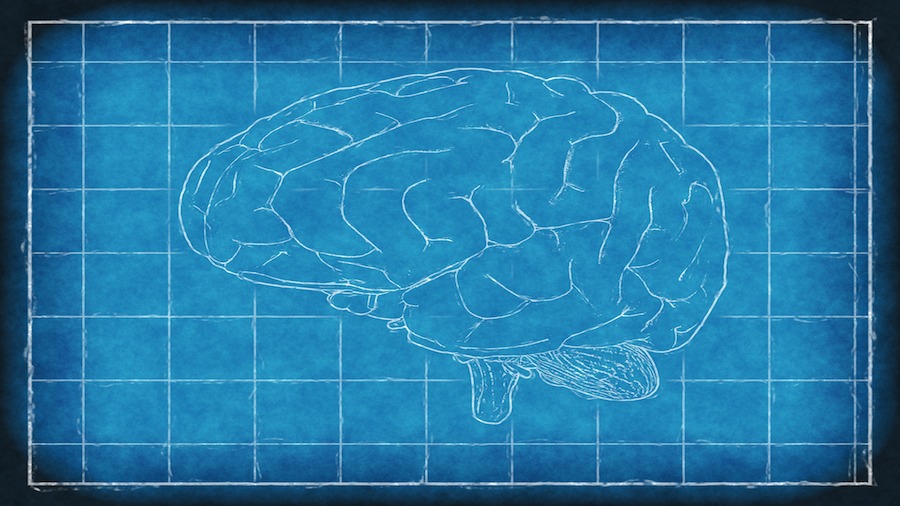16 Apr The Inattentive Brain / ADD / ADHD Disorder

What is ADD/ADHD Disorder?
Attention deficit disorder (ADD) and attention deficit hyperactivity disorder (ADHD) are characterized by difficulty with attentional flexibility, particularly changing easily from one task to the next, and by impulsivity. Some patients with attentional disorders also display hyperactive behavior. The social and functional impairment of these persons is quite extensive often resulting in excessive stress placed on the family unit and educational systems to say nothing of the added demand on health care resources. The prevalence of the inattentive brain/ADD/ADHD disorder is thought to be approximately 4-7% in the United States. Much clinical evidence suggests that these are not monolithic disorders. This is underscored by the fact that ADD/ADHD are co-morbid with numerous other mental/developmental disorders. [Although no officially sanctioned agreement of the term exists, comorbidity is a concept that two or more diseases occur in the same patient more often than could be expected by chance alone indicating that the disorders likely share common mechanisms.
Dr. Terrence Moore, M.D.
Doctors – Looking to expand your reach and build your business? Click HERE to get started today.
In the case of ADD/ADHD comorbid conditions include conduct disorders, oppositional defiant disorders, disorders of mood and learning disabilities. The quotidian experience of peers, parents and teachers with these individuals validates the conclusion that they are socially problematic, disruptive, aggressive, manipulative and often have difficulty communicating in ways that are considered acceptable.
Inattention is frequently characterized by difficulty staying on task or topic which results in unfinished work, apparent ‘careless’ errors and, thereby, academic underachievement. Organizing tasks or things needed to complete tasks is a difficult undertaking. These children often do not ‘hear’ spoken instructions or information because of either internal or external distractions which leads to problems taking tests, doing homework or forgetting things previously discussed.
“I forgot to bring my math textbook home to work problems for my homework.”
On the other hand, many children with ADHD can engage with electronic entertainment devices or other preferred undertakings with evident laser-like focus for extended periods which suggests that impairment of attention per se may be an over-simplification of what is really going on.
To me this may reflect a hyper-focus which impairs the normal ability to re-direct attention as need arises for appropriate adaptive behavioral flexibility.
“He never answers when I call him for supper because he is playing that game on his phone.”
Inattention may contribute to the commonly manifested avoidance behaviors in these children, some of whom develop a sophisticated psychological repertoire to accomplish this. Typically, it involves a given activity that requires sustained attention for an activity the child finds difficult, such as reading or working math problems.
Often the child will generate manifold reasons why the desired activity cannot be done or claims that it has, in fact, been completed despite solid evidence to the contrary. Unfortunately, this often generates arguments with parents about what was or was not completed.
Impulsivity and hyperactivity often co-exist. These behaviors are positive acts that are, by definition, disruptive to the child’s environment. Familiar hyperactive behaviors include fidgeting, speaking out of turn, problems waiting for one’s turn or staying seated when doing so is a reasonable expectation e.g. as meal time.
Some hyperactive children appear to have an inexhaustible supply of energy which may tax the patience of caregivers. Impulsivity can lead to destructive or harmful outcomes. This likely involves a strong desire for instant gratification without regard to consequences. Impulsive children frequently speak out of turn in class or interrupt others. Toys or other things may be broken through neglect or in piques of acute frustration.
“He broke his glasses by throwing them on the sidewalk when he did not get his way.”
These children are sometimes characterized as ‘accident prone.’ It is likely that behavior problems may be more overtly manifest at home compared to school. Why this is the case is unclear, but may be related to children viewing expectations of the two settings differently, the effect of prolonged, rigid structure at school that cannot be maintained at home, wearing-off of medications after school, the differential nature of the parent-child vs teacher-student relationships among other factors.

What Causes The Inattentive Brain/ADD/ADHD Disorder?
The cause(s) of this syndrome are unknown. Mick et al. have reported that low birth weight may account for as much as 13% of children with ADHD. In addition to a parental history of ADHD, in utero exposure to alcohol and cigarette smoking substantially increases the risk of ADHD.
Spencer has calculated through extensive study of identical and fraternal twins that approximately 75% of the occurrence of ADHD is attributable to genetic factors. Various candidate genes have been proposed, but none is considered necessary for diagnosing the condition.
Further, no endophenotype (biological marker) has been described for ADD/ADHD. Boys are affected two times more frequently than girls. Most evidence suggests that symptoms lessen with increasing age.
Multiple instruments are used to assess children and adolescents suspected of ADHD, but none is considered a means for providing a definitive, objective diagnosis.
What is DSM 5 Circular Diagnosis of ADD/ADHD?
The DSM 5 definition of ADD/ADHD is as follows: A persistent pattern of inattention and/or hyperactivity-impulsivity that interferes with functioning or development, as characterized by inattention and/or hyperactivity and impulsivity. This is an amazingly circular definition which nonetheless has received the gravitas of academic and governmental reification.
DSM 5 goes on to say that the inattention and/or hyperactivity and impulsivity must be present for at least 6 months to a degree that is inconsistent with the person’s developmental level and has negatively impacted directly on social and academic/occupational activities. Both inattention and hyperactivity/impulsivity each have nine separate symptoms listings of which six in each category must be present for the diagnosis to be established.
Previous age of onset by year seven with DSM IV has now been extended to age 12 which will lead to a considerable expansion of the numbers of minors who are diagnosed and medicated accordingly. Also, adults with at least five of the 18 symptoms may now be diagnosed with ADHD.
Problems with OverDiagnosis of ADD/ADHD
A potential serious problem with a medical diagnosis which relies exclusively on descriptive phenomenology as is the case with most so-called mental disorders is that clinicians may differ substantially regarding what constitutes a disease.
In other words, various ‘diseases’ are diagnosed solely on descriptions of observable symptoms. While knowing about and tracking such symptoms is important, their presence tells us nothing about the underlying physiological problem with the brain. In the case of ADD/ADHD the diagnosis is often based primarily on the response to treatment i.e. whatever gets better with stimulant medications must be ADHD.
The vagaries of descriptive phenomenology, perhaps especially with behavioral disorders, leads to a great deal of overlap among supposedly distinct syndromes.
To take an example from DSM V, oppositional defiant disorder is comorbid with ADHD about 50% of the time. Subtle differences in behavioral manifestations have led to an explosion of the number of officially recognized ‘mental disorders’ which now number over 200 by some estimations.
Do ADHD Medications Work?
Stimulant medication may help some symptoms of ADHD, but do nothing for the oppositional behaviors. Other significant comorbid conditions according to DSM 5 earlier include:
- pediatric bipolar disorder
- disruptive mood dysregulation disorder
- reactive attachment disorder
- autism spectrum disorder
- obsessive-compulsive disorder
- Tourette’s syndrome
Clearly in many children labeled as ADHD something more than an “attentional deficit” is the problem. Substantial minorities also have somatic complaints such as abdominal pain, headaches and sleep disturbance. It is worth noting that the DSM 5 contains no references to clinical or scientific publications used to support its conclusions.
Given the huge degree of diagnostic overlap among different syndromic disorders described by DSM, it seems likely that many mental disorders result from abnormalities of the brain’s ability to regulate itself. Having a better working model, preferably based on objective evidence, of how the brain regulates its own behavior would provide options for improving brain functioning long term rather than just medicating symptoms.
If the brain is viewed as a self-regulating organ, then a model of dysregulation may better explain most disorders described in the DSM. Recent empirical evidence indicates that the brain works as a system of interconnected networks which appear to operate with specific intrinsic frequencies.
The default mode network (DMN) and salience network (SN) are central to this thesis. Neurofeedback works by targeting these networks or domains to improve self-regulation. With the dysregulation model, the pattern of symptoms is important inasmuch as it informs the plan of treatment.
Thus, having symptoms fall into preconceived diagnostic categories is no longer needed.

Your Child’s Brain on Drugs
Standard recommended treatment for ADHD consists of pharmacotherapy and behavioral therapy. Pharmacotherapy generally consists of stimulant medication such as methylphenidate and amphetamines which can produce temporary salutary benefit, but this is often accompanied by substantial side effects.
The CDC recommends pharmacotherapy as second-line treatment (behavior therapy is first-line) for preschool children ages 2-5 years. Moreover, according to the May 6, 2016 Morbidity and Mortality Weekly Report slightly more than 3 in 4 such patients are on medication whereas only 55% or fewer received behavioral therapy. As many as 30% of children with ADHD do not respond to medication or develop intolerable side effects.
While stimulant drugs do improve some symptoms of ADD/ADHD, medications have not demonstrated improvement in functional domains such as academic achievement, cognition and social skills.

What are the Side Effects of ADD/ADHD Medications?
Studies indicate significant ‘side effects’ from ADHD medication such as stimulants includes:
- appetite suppression
- insomnia
- headaches
- stomach pain
- mood swings
- tics
Moodiness can be especially prominent after a dose of medication has worn off. Non-stimulant atomoxetine (Strattera) has a severe FDA warning (Black Box) specifying increased risk of suicidal thoughts in children and adolescents.
The Agency for Healthcare Research and Quality (AHRQ) issued a report in July 2012 which indicated that very few studies evaluating the safety of drugs such as methylphenidate and atomoxetine included healthy control subjects.
Furthermore, the available studies were largely funded by the pharmaceutical industry. More importantly, no studies evaluating long-term safety in preschoolers have been published.
The introduction of psychoactive medications to children 5 years and younger is increasing. According to IMS Health, the largest vendor of prescribing data among US physicians, as of April 2014:
1,146,530 children 5 years and younger are on some type of psychotropic drug
192,878 of these are on medication for ADHD
8,389,034 children 17 and younger are on some type of psychotropic drug
4,404,360 are on ADHD medication

Serious Side Effects of ADD/ADHD Medications?
Furthermore, ADD/ADHD medications are not at all benign having the potential of serious side effects. A total of 61 warnings have been issued by 9 separate countries (Australia, Canada, France, Denmark, Japan, New Zealand, Singapore, United Kingdom, United States) regarding these medications including:
- Cardiovascular disease
- Death or sudden death
- Cardiac problems
- Mania or psychosis
- Skin conditions
- Allergic reactions
- Depression
- Eye problems
- Hallucinations
- Hostility or aggression
- Involuntary movements
- Addiction or dependence
- Suicide risk or attempt
- Anxiety
- Seizures or convulsions
- Heart attack
- Liver problems
- Stroke
- Abnormal behavior
- Irritability
- Sleep disturbance
- Elevated blood pressure
- CNS disorder
- Stunted growthAgitation
- Drug abuse
40 studies from 16 countries (Australia, Belgium, Canada, China, Columbia, Denmark, Germany, Hungary, Ireland, Italy, Netherlands, Scotland, South Korea, Spain, United Kingdom, US) citing substantial side effects including:
- Cardiovascular disease
- Heart problems
- Lack of efficacy
- Sleep disturbance
- Blood pressure problems
- Stunted growth
- Abnormal behavior
- Sudden death
- Drug abuse
- Heart attack
- Decreased bone mass
- Cognitive impairment
- Hallucinations
- Homicidal ideations
- Involuntary movements
- Irritability
- Mania or psychosis
- Nervous system disorders
- Stroke
- Suicide risk or attempt
- Violence
- Withdrawal symptoms
Despite ongoing research into ADD/ADHD and its treatment, very little real progress has been made with respect to understanding the fundamental problem within these persons’ brains and the development of treatments that produce lasting improvement in their functional status.

If ADD/ADHD Drugs Do Not Work, Then What?
A foolish consistency is the hobgoblin of little minds.
–Ralph Waldo Emerson
As mentioned earlier, the brain is a self-regulating i.e. autonomous, organ meaning that it tries to maintain itself in a stable, optimum status. I have previously written about self-regulating or self-organizing systems which appear to be driven by consciousness.
All of life may be considered self-organizing or capable of ordering itself and growing. How can seeds of different plants grow side by side without some capacity for self-regulation? How do things grow according to what appears to be some preconceived plan? It happens that the human brain is the mediator of the most sophisticated and complex form of consciousness known. In fact, most of the brain’s ‘consciousness’ is unknown to our waking subjective experience i.e. most of what it does occurs at a subconscious level.
It has been estimated that the human brain executes about 10^24 operations per second! A few moments reflection about this indicates that most of what we learn, we learn through subconscious mechanisms excellent examples of which include learning to walk and learning to talk.
Neurofeedback to Treat ADD/ADHD Disorder
Thus, inasmuch as most brain activity is subconscious, a therapy that somehow appeals to the brain’s subconscious self may be just what the doctor ordered. Neurofeedback has been used in infants and, if you read my article about the plastic brain, you know it also made cats resistant to chemically induced epilepsy.
Effects in both instances cannot be attributed to volitional subjective experience. Somehow, from the real-time feedback of its status as represented by its EEG activity, the brain i.e. the subconscious brain, informs itself of what changes are necessary to optimize its functional capacity. Functional changes in brain connectivity have been demonstrated using fMRI immediately following a 30-minute session of neurofeedback. Such changes cannot be accounted for by the current paradigm of neuroplasticity. As I have said previously, changes taking place in the brain’s associated electromagnetic field (EMF) may account for said changes in functional connectivity following neuro- feedback. None of this happens with medication usage for any brain disorder.
It may be worth mentioning at this point that other mainstream non-drug therapies such as repetitive transcranial magnetic stimulation (TMS), electroconvulsive (shock) therapy (ECT) and transient direct current shock (tDCS) for chronic brain disorders attempt to target the brain’s regulatory mechanisms as does NF.
The same holds for invasive procedures such as deep brain stimulation and vagal nerve stimulation. Aside from tDCS, these techniques are hamstrung by being extreme and are generally invasive.
They are also very expensive compared to NF. Finally, they are not at all applicable to most patients with chronic brain disorders in contrast to NF which has broad applicability. Further, they do not often lead to healthy and functional human beings.

NF for ADHD-the evidence
Give a man a fish and you feed him for a day. Teach him how to fish and you feed him for a lifetime.
–Source indeterminate
Few may disagree that the point of the healing arts is to restore the patient to normal health. As practitioners we should be focused on assisting our charges in so far as possible to a state of health that allows for self-sufficiency as the above proverb suggests.
Many psychiatric/psychological disorders result from learned behaviors that are not likely to be remediated with medications. Neurofeedback provides an opportunity for long-term modification of behavior compared to current practices in persons with chronic brain disorders.
Published research describing improvements in children with ADHD treated with neurofeedback date back as far as 1976. At least six published trials comparing neurofeedback to pharmacotherapy have shown equivalence between the two therapies.
In 2013 the American Academy of Pediatrics rated neurofeedback as having Level 1 efficacy (highest rating) in treating ADHD. This conclusion was based on a review by the independent research service PracticeWise of the extensive body of published evidence that neurofeedback was effective and safe in patients with ADHD.
Curiously, the AAP in 2014 issued a clarification stating that its position, since 2010, that biofeedback had “good” evidence in treating ADHD had not changed. Perhaps more importantly, the data supporting the Level 1 rating by PracticeWise was not questioned by the AAP. Current techniques in neurofeedback are more refined and much more effective.
A meta-analysis from 2009 of multiple randomized trials concluded that neurofeedback treatment of ADHD symptoms was both “Efficacious and Specific.” [This rating refers to the Guidelines for Clinical Efficacy of Psychophysiological Interventions published in 2002 proposing five levels confidence of evidence based studies ranging from “not empirically supported” to “Efficacious and Specific.” These guidelines have been adopted by the Association for Applied Psychophysiology and Biofeedback (AAPB) and International Society for Neurofeedback and Research (ISNR) and are similar to those used by the American Psychological Association (APA).]
To qualify for “efficacious and specific,” the treatment must be statistically superior to a credible sham therapy, medication or gold standard treatment in at least two independent studies. Furthermore, large effect sizes were noted for impulsivity and inattention and modest ones for hyperactivity.
Further, studies also indicate that the gains attained by those treated with neurofeedback are maintained at least up to one year following discontinuation of the therapy. This is not true of patients treated with medication. Further, neurofeedback treated children have improvement in social interactions and academic achievement.
Children with inattentive brain/ADD/ADHD disorder are likely best served with a multimodal approach that may include dietary management, supplements, behavioral therapy as well as parental counseling. Neurofeedback is an effective first line treatment for ADD/ADHD, not just an alternative for patients who do not do well with medications.


